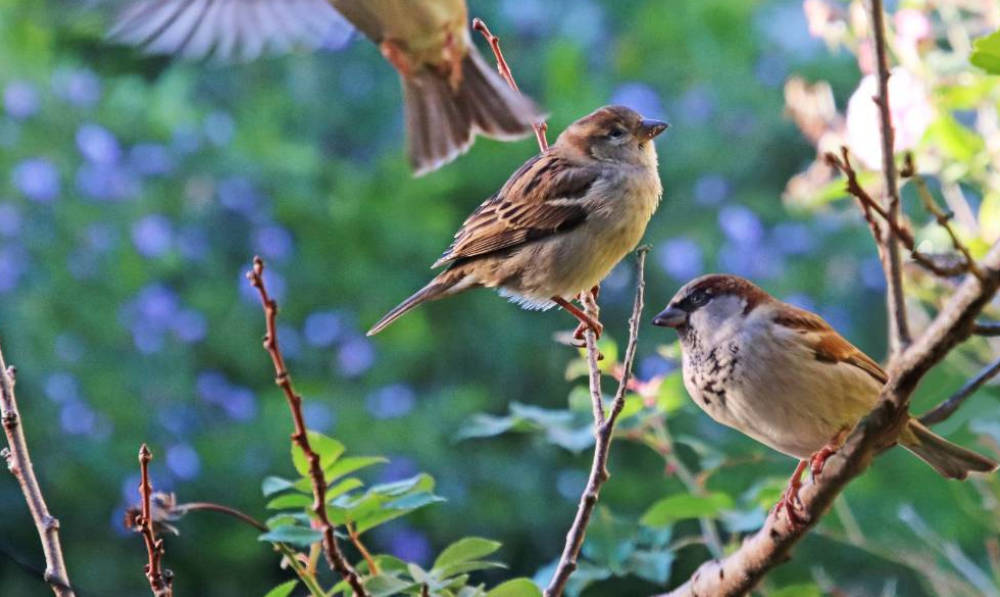KEY TAKEAWAYS:
Scare Tactics Work: Use visual and auditory deterrents like scarecrows, reflective objects, and noise makers to startle and keep birds away.
Physical Barriers are Effective: Implement bird netting, row covers, and fencing to physically prevent birds from accessing your plants.
Modify the Habitat: Remove bird attractions like feeders and water sources, and consider planting less appealing or sacrificial plants to divert birds.
Use Repellents: Apply commercial or homemade repellents, such as garlic oil or chili pepper spray, to make your plants unappealing to birds.
Involve Pets: Let pets like dogs or cats patrol the garden area, as their presence can deter birds from coming too close.
Gardens are sanctuaries of growth, beauty, and peace.
They are places where we nurture plants, flowers, and vegetables, investing time and effort to see them thrive. However, gardens can also attract uninvited guests—birds.
While birds are a natural part of the ecosystem and can be beneficial in some ways, they can also wreak havoc on your garden, eating seeds, fruits, and vegetables, and sometimes even damaging plants.
If you’re facing such challenges, here are some effective and humane ways to keep birds away from your garden.
1. Scare Tactics
Visual Deterrents:
Scarecrows: The traditional scarecrow can still be effective. Make sure to move it around occasionally to prevent birds from getting used to it.
Reflective Objects: Hang reflective tape, old CDs, or aluminum foil strips around your garden. The light reflections can startle and deter birds.
Predator Decoys: Owl or hawk decoys can be quite effective. Place them in visible spots and move them periodically to maintain the illusion of a threat.
Auditory Deterrents:
Noise Makers: Wind chimes, bells, or even homemade noise makers can help. The unfamiliar sounds can scare birds away.
Ultrasonic Devices: These devices emit high-frequency sounds that are unpleasant for birds but inaudible to humans. They can be effective but might not work on all bird species.
2. Physical Barriers
Netting:
Bird Netting: Cover your plants with fine mesh netting. This prevents birds from accessing the plants without harming them.
Row Covers: These are lightweight fabrics that can be draped over plants to protect them while allowing light and water to pass through.
Fencing:
Chicken Wire: Surround your garden with chicken wire or other types of fencing. Ensure the openings are small enough to keep birds out.
Electric Fences: For larger gardens, low-voltage electric fences can be used. These provide a harmless but effective shock to deter birds and other pests.
3. Habitat Modification
Remove Attractions:
Bird Feeders: If you have bird feeders, place them far from your garden. This will attract birds away from the area you want to protect.
Water Sources: Eliminate standing water or bird baths near your garden, as these can attract birds.
Plant Selection:
Unappealing Plants: Integrate plants that birds find less appealing, such as certain herbs (e.g., sage, thyme) or spiky plants (e.g., holly, barberry).
Sacrificial Plants: Plant bird-attractive plants away from your main garden as a decoy. Birds will focus on these instead of your main crops.
4. Chemical Repellents
Commercial Repellents: There are several bird repellents available on the market. These are usually non-toxic and can be sprayed on plants.
Homemade Solutions: Some gardeners use mixtures like garlic oil spray or chili pepper spray to deter birds. These are safe for plants and can be an effective repellent.
5. Companion Animals
Pets: If you have a dog or a cat, their presence alone can deter birds. Allowing them supervised access to the garden can help keep birds at bay.
Guard Animals: Some gardeners use trained guard animals like dogs specifically trained to keep birds away from the garden area.
6. Community and Legal Considerations
Before implementing any bird deterrent methods, check local wildlife protection laws to ensure that your methods comply with legal standards.
Some bird species are protected, and harming them can be illegal.

